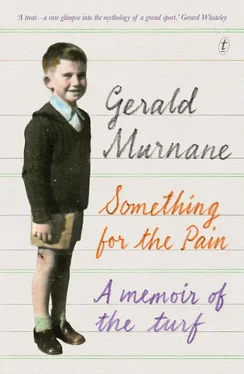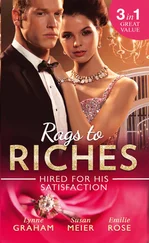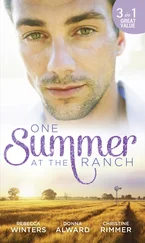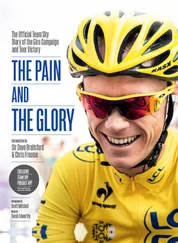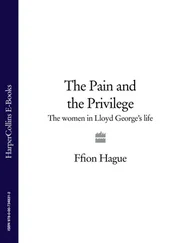The first two horses that I selected and backed were beaten — one thoroughly but the other only narrowly. I had lost forty dollars, or about five hundred in today’s currency. Having a large bank is meant to keep a punter calm during losing runs of ten or twelve. I had backed only two losers but I was by no means calm. I let two races pass, telling myself the betting gave me no clear indication. Before the following race, one horse was clearly being backed by men in the know. Its odds shortened from eights to fives or sixes. This was the horse that I had to back.
I have never been able to recall the horse’s name. I recall that it was trained at the old Epsom course in Mordialloc and that the rider wore mostly black with markings of green and yellow. My not recalling the name tells me that I must have been under considerable strain at the time. I won’t try to describe how I dithered and hesitated or how I went past one after another bookmaker with my twenty-dollar note in my hand until something caused me to push my way out of the betting ring and to go to the totalisator and bet five dollars win-only on the shortener, which, of course, won with ease.
I had no more bets that day. I had to stay until the last race because my only means of getting home was by race train. If the meeting had been in Melbourne, I would have gone home at once by train or tram. I was neither angry nor upset. I was bemused by what I had learned about myself that day. Unlike my father, who seemed to lose all sense of the value of money when a race was in the offing, I seemed to have a built-in regulator that would not allow me to bet more than a certain amount. I might have said that whenever I stepped onto a racecourse my arms became short and my pockets deep.
What surprises me nowadays is that I had not already learned my limitations as a punter nearly fifteen years before, on the day when Basil Burgess brought his two horses, On Parade and Agathis (both carrying Red, royal-blue sash) to a meeting at Moonee Valley. Many New Zealanders brought their horses each year to Melbourne for the spring carnival, but Basil Burgess had crossed the Tasman in midwinter and each of his two horses was entered in a minor race.
The New Zealanders fascinated me — the owners and trainers, I mean. For one thing, their country had legislated bookmakers out of existence decades before. The only legal form of betting was with the totalisator. To launch in New Zealand the sort of betting plunges that took place in Australia would have been counterproductive — the greater the sum invested, the less the win dividend. How, I often wondered, did the many smart men in New Zealand profit from their smartness or their inside information? I supposed that their policy must have been secrecy at all costs; that knowledge of a horse’s prospects must have been shared among the fewest possible people; that a stable’s commission was launched not by three or four well-known identities in full view of other punters but by one person alone — perhaps someone’s nonchalant-looking wife or mother-in-law — with instructions to wait until three minutes before the race before discreetly handing over a bundle of notes at a tote window.
Whether or not as a result of their having only the tote to bet with, the New Zealanders seemed to me even less predictable than the shrewdest of their Australian counterparts. I recall an example of New Zealand acumen at work. At a Caulfield meeting not long before the Cup itself, a New Zealand trainer had two horses engaged. When interviewed by a racing journalist on the Friday, the trainer talked up the chances of one of the horses, which was a leading contender for the Caulfield Cup. The other horse was not mentioned in the interview. Even if the journalist had asked about the horse, the trainer must have claimed it was not worth writing about. On the Saturday, the Caulfield Cup hope ran fourth at short odds. The other horse, named either Cybeau or Sybeau, and carrying dark-green-and-white stripes, ran in a minor race on the program. The horse was leading the field by three lengths when they passed me in the old Guineas stand and was even further in front at the post. It had been friendless in the betting, as the saying goes, and had started at forty-to-one.
On the evening before the meeting at Moonee Valley, I spent much time and effort in trying to anticipate Basil Burgess’s moves. I was convinced that one of his horses would win or go close to winning while the other would be saved for another day. On Parade was third- or fourth-favourite in an early race on the program while Agathis, which had very poor form, was an outsider in a later race. I had such an exaggerated opinion of the cunning of men such as Burgess that I arrived at the course almost persuaded not to back On Parade and to have two pounds — my standard bet at the time — on the unfancied Agathis. I might have followed this extreme course of action, except that On Parade seemed unwanted in the betting before the race. I could not resist the ten-to-one on offer and had what I would have considered a half-bet on the horse: ten-pounds-to-one, win-only. On Parade won easily.
As the time for Agathis’s race drew near, my thinking was tangled indeed. I was trying, or so I thought, to outguess a man who made a living, or so I thought, from conduct that was unguessable. The most obvious possibility seemed to be that Basil Burgess had achieved his goal for the day and that Agathis would finish in the ruck and would be worth backing at a later date. But I began to question this line of thinking about fifteen minutes before Agathis’s race when Frank McCann, easily the biggest bookmaker in the old South Hill enclosure, was betting thirty-three-to-one against the horse. These were lucrative odds for a horse trained by a cunning New Zealander. I began to consider the possibility that Basil Burgess was putting into practice that day what I have since heard described as reverse psychology. What if the New Zealander was demonstrating his cunningness by behaving without any seeming cunningness? What if suspicious punters such as myself were tying themselves in mental knots in an effort to anticipate Burgess’s plans while he himself was behaving with transparent honesty? In short, I came around to the conclusion that Agathis was worth backing.
If I’d had the courage of my convictions — if I had dared to back my assessment of the deviousness of Basil and his fellow countrymen, then I should have bet all my winnings from On Parade on the stalemate in the hope of winning more than three hundred pounds, which would have been a small fortune for me. The thought of risking my ten pounds, however, caused me to question my own judgement about the degree of Basil Burgess’s cunningness. My doubts multiplied as the time for the race approached. Before I left the ring, I had half a pound, or ten shillings, on Agathis at thirty-three-to-one. The other nine and a half pounds of my winnings stayed at the bottom of one of my deep pockets and well out of reach of my short arms while Agathis completed a winning double for owner-trainer Basil Burgess at Moonee Valley.
15. P. S. Grimwade in the Central Highlands
I’VE MENTIONED THAT racing is for me what religion is for another sort of person, and that this is a serious matter. Racing provides me with a set of beliefs and a way of life. Racing also, like many a religion, has its saints. These are, for me anyway, legendary rather than historical figures. The legends surrounding the saints are all of my own making. This could hardly be otherwise, given that mine is largely a one-man religion with myself as bishop, priest, congregation and, in this instance, hagiographer.
In the years when I was mastering the art of reading, we had few books in our house but I got plenty of practice with headlines in newspapers, captions on advertisements, word balloons in cartoons and comic strips, and labels on packets, cans, and bottles. I don’t know why my father kept a bottle of hydrogen peroxide in the bathroom. Did he clean his teeth with the stuff? Put drops of it into his ears to dislodge wax? Anyway, I saw the bottle often. The glass was brown. The label had a border of green and was dense with black words on a white ground. I would have read the words often, although many were surely beyond my comprehension. I remember three today: the three surnames comprising the business name of the company that had bottled the stuff. The three were Felton, Grimwade, and Guerin.
Читать дальше
